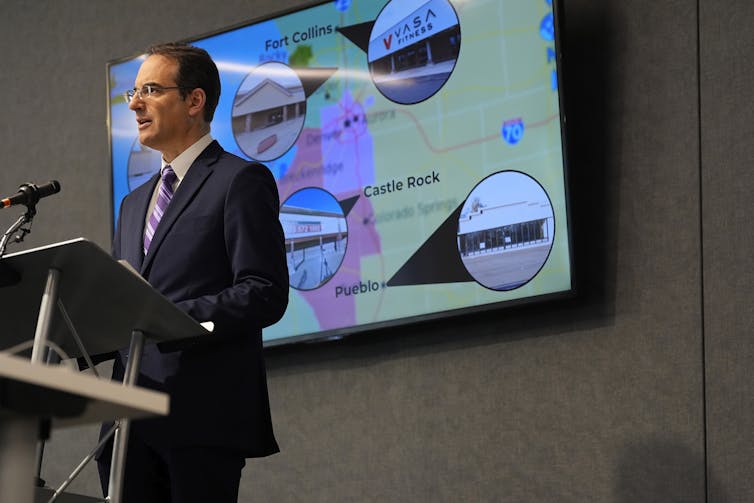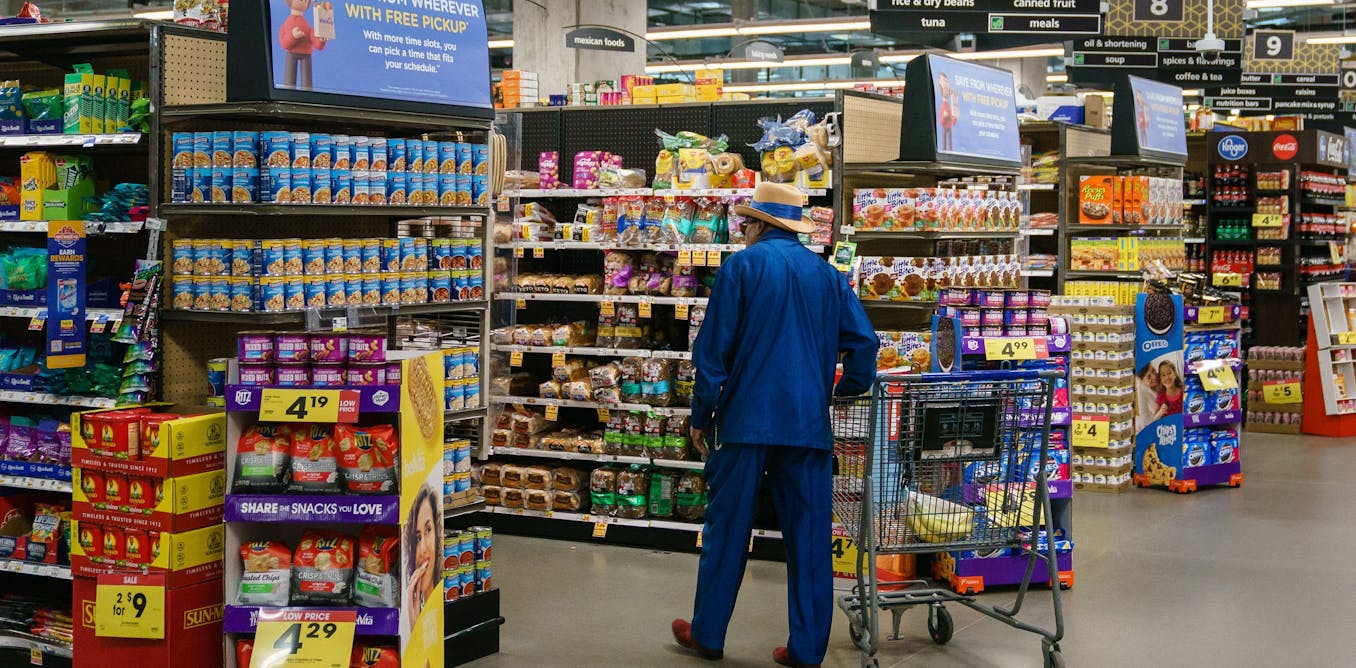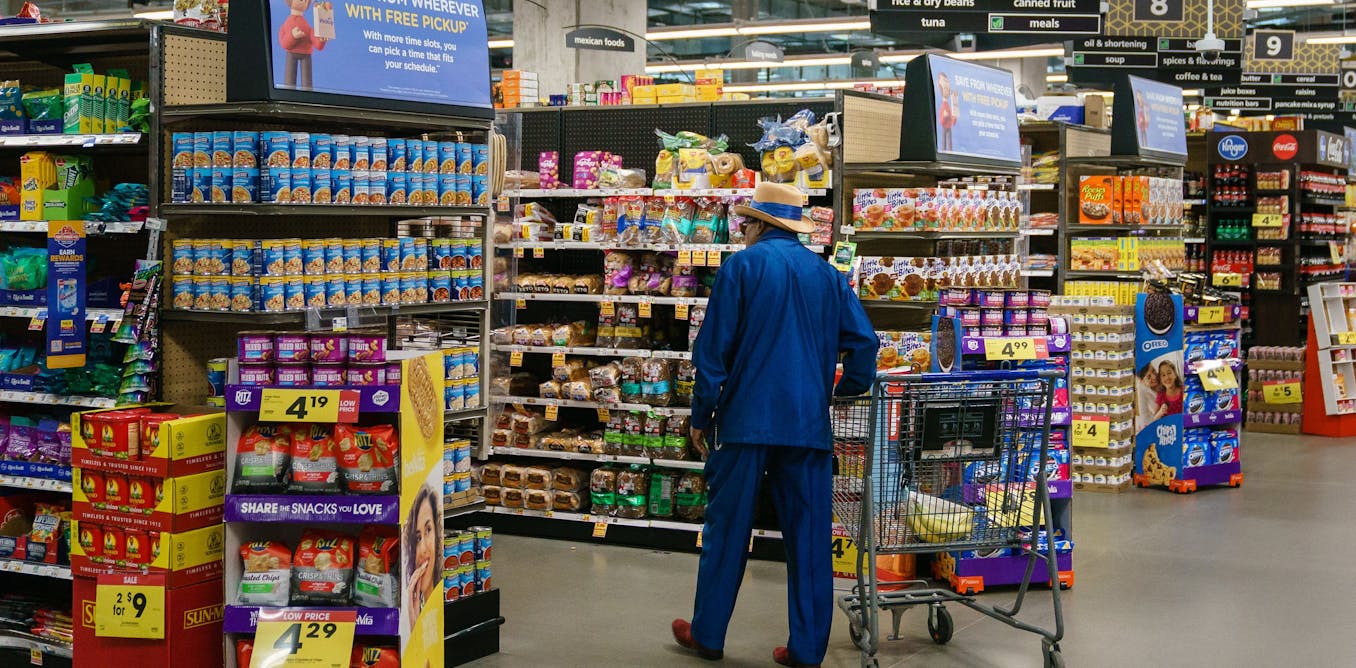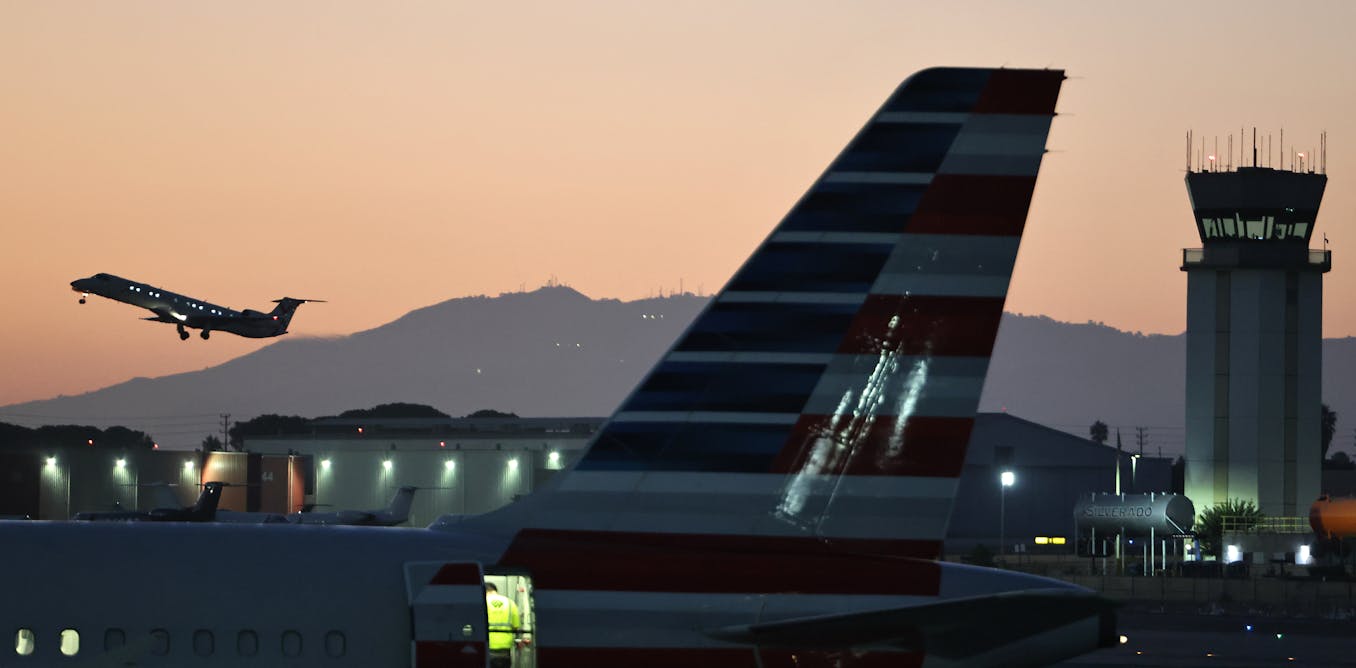The Federal Trade Commission announced on on Feb. 26, 2024, that it’s suing to prevent Kroger’s attempt to acquire Albertsons. The US$25 billion deal, first announced in 2022, would combine Cincinnati-based Kroger, already the largest traditional U.S. supermarket chain, with Boise, Idaho-based Albertsons, which is currently the fourth-biggest. The Conversation asked Christine P. Bartholomew, a professor at the University at Buffalo School of Law who researches consumer protection, to explain what’s at stake and why the government opposes this merger.
Which supermarkets belong to the two companies?
The proposed merger involves more than 5,000 stores in 48 states. Millions of their customers, whose shopping routines could be affected if the deal goes through, may not recognize these brand names because they shop at supermarket chains large and small that the companies have acquired in recent decades through previous mergers.
Kroger has 28 subsidiaries with nearly 2,800 supermarkets, including Harris Teeter, Dillon’s, Smith’s, King Soopers, Fry’s, City Market, Owen’s, JayC, Pay Less, Baker’s Gerbes, Pick‘n Save, Metro Market, Mariano’s Fresh Market, QFC, Ralphs and Fred Meyer.
Albertsons owns and operates more than 2,200 supermarkets through its many brands. They include Safeway, Vons, Jewel-Osco, Shaw’s, Acme, Tom Thumb, Randalls, United Supermarkets, Pavilions, Star Market, Haggen, Carrs, Kings Food Market and Balducci’s.
Why does Kroger want to acquire Albertsons?
The companies argue that they need to join forces to compete against even bigger online and big box retailers. Over the last two years, Walmart and Costco have gained market share while other chains have held steady or lost ground. Discount and alternative format stores, like Aldi and Costco, are also placing competitive pressure on these stores, along with stiff competition from dollar stores, one of the fastest-growing segments of U.S. retail.
If the merger goes through over the federal government’s opposition, the new company would cement its position, ensuring it has the largest market share for grocery purchases after Walmart.
By getting even bigger, Kroger and Albertsons contend, these already huge supermarket chains would gain more bargaining power, enabling them to charge lower prices, earn higher profits and spur more innovation. While that might sound like a good thing, they have provided few details on how these gains would be realized.
What could go wrong?
The government is getting involved out of concern that this merger could deny many shoppers the benefits of competition.
If the deal goes through, Walmart plus the combined Kroger and Albertsons company would control 70% of the grocery market in more than 160 cities. Its dominance could empower the enlarged company to drive up prices at a time when consumers are already feeling the pinch.
History has taught me and other scholars who study grocery store mergers to be skeptical about claims that adding more stores into ever-larger companies will lower prices and enhance competition.
When the FTC assessed the impact of 14 mergers in the supermarket industry, it found that though companies in virtually every merger promised lower prices, those promises only came true in less than half the deals.
The proposed merger could possibly harm workers too, the government contends. The FTC warns that the merger could restrain wages, reduce benefits and weaken worker protections for the 720,000 employees working for supermarkets owned by the two companies.
Grocery expenses gobble up almost 11.3% of consumers’ disposable income. Even small price increases for eggs, milk and other groceries that most Americans regularly purchase can strain household budgets.
The FTC’s warning echoes the sentiment of many members of the United Food and Commercial Workers International Union, which has opposed the deal since it was announced.
Frederic J. Brown/AFP via Getty Images
How will the courts decide?
The central question in the case will be whether the proposed merger violates the Clayton Act. This 1914 law bars mergers that “may be substantially to lessen competition, or to tend to create a monopoly.”
Proof that mergers would result in higher prices isn’t necessary. Rather, there need only be an appreciable danger that the level of competition will decline. The initial proceeding is administrative, meaning it would be heard by an in-house administrative judge.
This judge will consider the impact of the merger on competition among supermarket chains, looking at variables such as whether it would increase market concentration and prices while undermining quality and innovation.
If the FTC and state attorneys general succeed in making that case, then Kroger and Albertsons have two choices.
They could argue that any such harm is offset by aspects of the merger that might boost competition in other ways and prove their claims that the merger would lower prices for shoppers.
Alternatively, the companies can try to refute any evidence from the FTC supporting its claims that the merger would restrict competition among supermarket companies.
To make their case, Kroger-Albertsons would likely point to its plan to sell off 413 of the supermarkets they currently own across the United States to C&S Wholesale Grocers. The plan, announced in 2023, also calls for the sale of some distribution centers, private labels and other assets to help competition in places like California, Washington and Oregon.
These steps raise key questions that are hard and complicated to answer. For example, which markets could be harmed by a merger? Would the proposed plan to sell off some assets protect consumers who shop in those areas?
The administrative judge will also need to assess the potential impact on workers.
Afterward, the case could go to a U.S. District Court for further review, meaning that resolving this dispute could take several more years.

AP Photo/David Zalubowski
What other litigation is going on?
The state attorneys general representing consumers in eight states – Arizona, California, Illinois, Maryland, Nevada, New Mexico, Oregon and Wyoming – joined this federal lawsuit. So has the District of Columbia’s attorney general.
And the Washington and Colorado attorneys general have also each filed suit in their own states to block the merger. Those cases are pending in state courts, and both will need to be litigated regardless of what happens with the FTC’s action.
The Colorado complaint may add additional antitrust concerns for the Kroger and Albertsons deal because it includes allegations that the companies have colluded to suppress workers’ benefits and wages. If proved, such conduct violates antitrust laws.
Even if the FTC is not successful, the enlarged supermarket company could face lingering antitrust scrutiny because it would still have to address Washington’s and Colorado’s merger challenges. And even if those challenges fail, the companies will have to respond to the Colorado attorney general’s allegations of collusion.
This article has been updated to correct a statement about market share for grocery stores in more than 160 cities. That figure includes Walmart, as well as the proposed Kroger-Albertsons company.

The post “What’s next for $25B supermarket supermerger after FTC sues to block it, saying it could raise prices” by Christine P. Bartholomew, Professor of Law, University at Buffalo was published on 02/28/2024 by theconversation.com






































